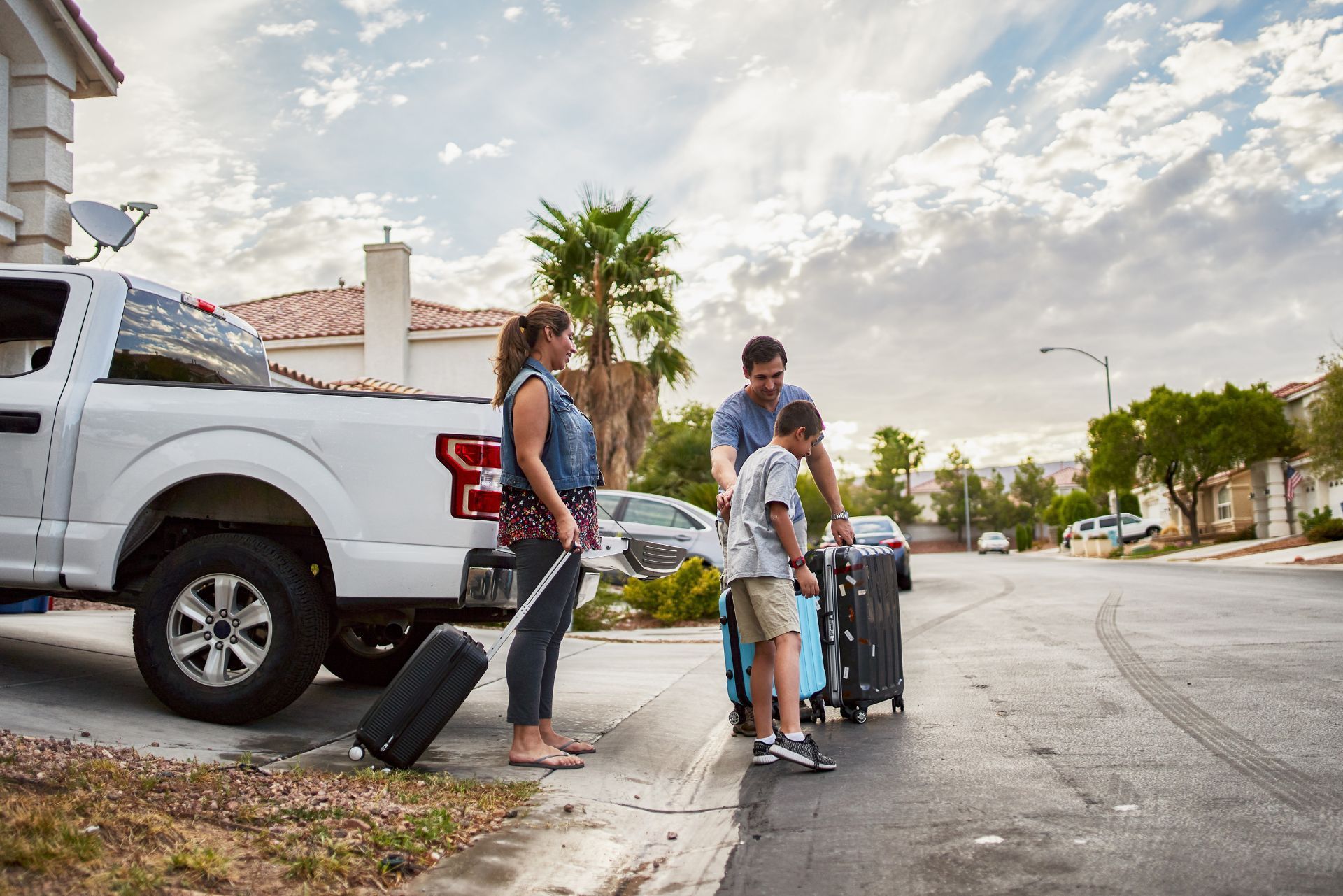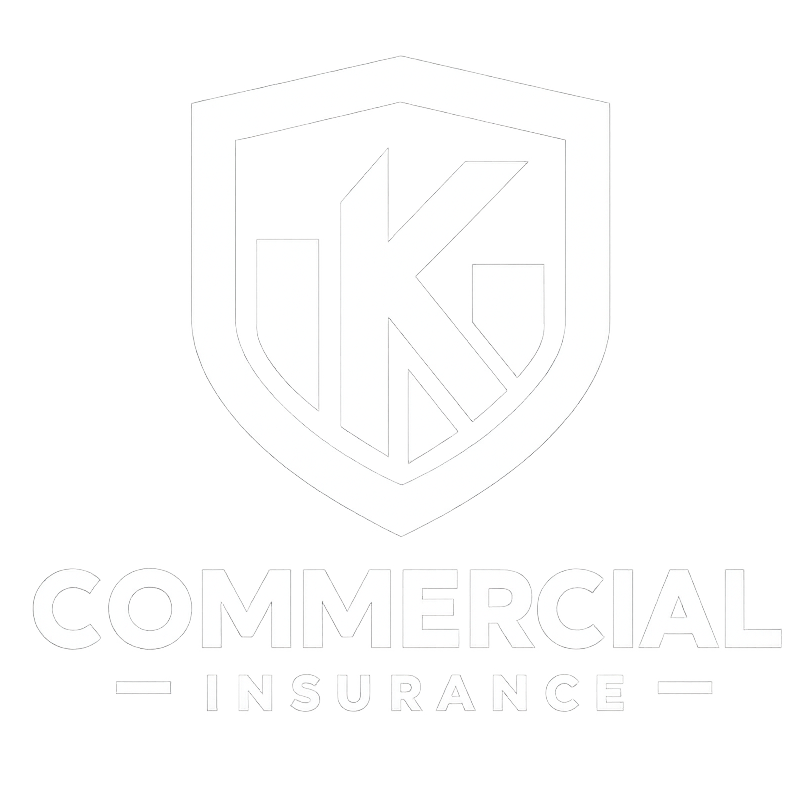Top 3 Recommended Policies

California's hot shot trucking industry is a vital component of the state's economy, providing expedited freight services that cater to a variety of businesses. However, operating a hot shot trucking business comes with its own set of unique challenges, particularly when it comes to insurance. This article delves into the essential aspects of hot shot trucking insurance in California, ensuring that operators are well-informed and adequately protected.
Understanding Hot Shot Trucking
Hot shot trucking refers to the expedited transport of goods, typically involving smaller loads that require immediate delivery. This service is often utilized for time-sensitive shipments, making it a crucial part of supply chains across various industries. Hot shot trucks, usually medium-duty vehicles or pickups with trailers, are designed for flexibility and speed. The ability to quickly mobilize and deliver goods sets hot shot trucking apart from traditional freight services, allowing businesses to respond rapidly to market demands and customer needs.
In addition to speed, hot shot trucking offers a level of versatility that is essential for many businesses. These trucks can navigate through urban environments and rural areas alike, making them ideal for delivering to locations that larger freight trucks may struggle to access. This adaptability not only enhances delivery efficiency but also broadens the range of potential clients, from construction companies needing urgent equipment parts to manufacturers requiring immediate raw materials.
The Role of Hot Shot Trucking in California
California is home to a diverse range of industries, from agriculture to technology, all of which rely on efficient transportation solutions. Hot shot trucking plays a pivotal role in ensuring that goods are delivered promptly, especially in a state where distance and traffic can significantly impact delivery times. As a result, hot shot trucking businesses are in high demand, but they must navigate the complexities of insurance to operate safely and legally. The regulatory environment in California can be challenging, with various permits and insurance requirements that hot shot trucking companies must adhere to in order to maintain compliance and protect their assets.
Moreover, the unique geography of California, with its sprawling urban centers, mountainous regions, and coastal routes, presents both opportunities and challenges for hot shot trucking. For instance, transporting goods from the bustling ports of Los Angeles to the agricultural heartlands of the Central Valley requires not only skillful driving but also an understanding of the best routes to take during peak traffic hours. Additionally, the rise of e-commerce has further fueled the need for hot shot trucking services, as businesses strive to meet the growing consumer demand for fast delivery options. This trend has led to an increase in competition among hot shot trucking companies, pushing them to innovate and improve their service offerings to stay ahead in a fast-paced market.

Why Insurance is Essential for Hot Shot Trucking
Insurance is not just a legal requirement; it is a critical component of risk management for any trucking business. For hot shot trucking operators, the stakes are particularly high due to the nature of their operations. Here are some key reasons why having the right insurance coverage is essential.
Legal Requirements
In California, all commercial vehicles must carry a minimum level of insurance. This includes liability coverage, which protects against damages caused to other parties in the event of an accident. Failure to meet these legal requirements can result in hefty fines and the suspension of operating privileges. Moreover, the legal landscape is continually evolving, with potential changes in regulations that could affect insurance requirements. Staying informed and compliant not only safeguards your business but also enhances your credibility with clients and partners who expect professionalism and reliability.
Protection Against Financial Loss
Accidents, theft, and damage to cargo can lead to significant financial losses. Hot shot trucking insurance helps mitigate these risks by providing financial protection against unforeseen events. Without adequate coverage, a single incident could jeopardize the entire business. Additionally, the costs associated with legal defense in case of lawsuits or claims can be exorbitant. Insurance not only covers damages but also shields operators from the financial burden of legal fees, ensuring that operators can focus on their core business activities rather than getting entangled in costly disputes. Furthermore, specialized coverage options, such as cargo insurance, can protect against losses during transit, making it imperative for hot shot truckers to evaluate their unique needs and select policies that offer comprehensive protection tailored to their operations.
Types of Insurance Coverage for Hot Shot Trucking
Hot shot trucking insurance typically encompasses several types of coverage, each designed to address specific risks associated with the industry. Understanding these types can help operators choose the right policy for their needs.
Liability Insurance
Liability insurance is mandatory for all trucking businesses. It covers bodily injury and property damage that may occur as a result of an accident involving the hot shot truck. In California, the minimum liability coverage required is $750,000, but many operators opt for higher limits to ensure better protection. Additionally, liability insurance can also cover legal fees and settlements if the operator is sued due to an accident, which can be a significant financial burden without adequate coverage. As the trucking industry evolves, some operators are also considering specialized liability policies that cater to unique risks associated with hot shot trucking, such as increased cargo value or specific delivery timelines.
Cargo Insurance
Cargo insurance is crucial for hot shot trucking operators, as it protects the goods being transported. This coverage can reimburse the owner of the cargo in case of damage or loss during transit. Depending on the policy, coverage can extend to various types of cargo, making it essential for operators to evaluate their specific needs. For instance, if an operator frequently transports high-value items, such as electronics or specialized machinery, they might need to invest in a policy that offers higher limits or additional protections against theft and damage. Furthermore, some cargo insurance policies can also include coverage for loading and unloading operations, which is vital since many accidents occur during these processes.
Physical Damage Insurance
Physical damage insurance covers the hot shot truck and trailer against damages resulting from accidents, vandalism, or natural disasters. This type of coverage is important for maintaining the vehicle's value and ensuring that repairs can be made promptly without incurring significant out-of-pocket expenses. Operators should also consider the age and condition of their vehicles when selecting a policy, as newer trucks may require different coverage levels compared to older models. Additionally, some insurers offer comprehensive and collision coverage as part of physical damage insurance, which can provide broader protection against various types of incidents, including theft and fire. This is particularly relevant for hot shot trucking operators who often work in unpredictable environments and may face unique challenges on the road.
Factors Influencing Insurance Costs
The cost of hot shot trucking insurance can vary widely based on several factors. Understanding these elements can help operators anticipate expenses and make informed decisions when selecting insurance policies.
Driving History
An operator's driving record plays a significant role in determining insurance premiums. A clean driving history with no accidents or violations can lead to lower rates, while a history of accidents or traffic violations may result in higher premiums. Insurers assess these records to gauge the risk associated with insuring a particular driver. Moreover, the duration of the driving history can also be a factor; experienced drivers with long-standing records of safe driving can often negotiate better rates than those who are newer to the industry. Additionally, participation in defensive driving courses or other safety programs can sometimes yield discounts, further incentivizing operators to maintain a responsible driving record.
Type of Cargo
The nature of the cargo being transported also affects insurance costs. High-value or hazardous materials may require additional coverage or higher premiums due to the increased risk involved. Operators should be transparent about the types of cargo they transport to ensure they have adequate coverage. Furthermore, the frequency and routes of transport can play a role; for instance, transporting goods through areas with higher crime rates or accident-prone zones may lead to increased premiums. Insurers may also consider the seasonality of certain cargoes, as some goods may be more susceptible to damage or theft during specific times of the year, prompting operators to review their insurance needs accordingly.
Vehicle Specifications
The make and model of the truck can influence insurance rates as well. Newer vehicles equipped with advanced safety features may qualify for discounts, while older trucks may incur higher premiums due to increased risk of mechanical failure or accidents. Additionally, the weight class and intended use of the vehicle are crucial; trucks designed for heavy-duty hauling may have different insurance requirements compared to lighter models. Operators should also consider the maintenance history of their vehicles, as well-maintained trucks are less likely to experience breakdowns or accidents, potentially leading to lower insurance costs. Regular inspections and timely repairs not only ensure safety but can also be a persuasive factor when negotiating insurance premiums.
Choosing the Right Insurance Provider
Selecting the right insurance provider is a critical step for hot shot trucking operators. The right insurer can make a significant difference in terms of coverage options, customer service, and claims handling. Here are some tips for choosing the best provider.
Research and Compare Options
Operators should take the time to research multiple insurance providers, comparing policies, coverage options, and premiums. Online comparison tools can simplify this process, allowing operators to evaluate different insurers side by side. Additionally, it's important to consider the specific needs of the hot shot trucking business, such as the types of loads being transported and the regions served. Some insurers may specialize in certain niches or offer tailored policies that better suit unique operational requirements.
Read Reviews and Testimonials
Customer reviews and testimonials can provide valuable insights into an insurance provider's reputation. Operators should look for feedback about claims handling, customer service, and overall satisfaction to gauge the reliability of potential insurers. Engaging with online forums or social media groups dedicated to trucking can also yield firsthand experiences from fellow operators, helping to paint a clearer picture of what to expect from different providers.
Consult with an Insurance Agent
Working with an experienced insurance agent can help operators navigate the complexities of hot shot trucking insurance. Agents can provide personalized recommendations based on the specific needs of the business, ensuring that operators are adequately covered without overspending. Furthermore, a knowledgeable agent can assist in understanding the nuances of various policy terms and conditions, which can be crucial in preventing costly misunderstandings down the line. They may also have insights into potential discounts or package deals that could further enhance the value of the insurance plan.
Understand the Claims Process
Before making a final decision, it's essential for operators to familiarize themselves with the claims process of potential insurance providers. A smooth and efficient claims process can greatly reduce stress during challenging times, such as when dealing with accidents or vehicle damage. Operators should inquire about the average turnaround time for claims, the documentation required, and the level of support provided throughout the process. This understanding can be a deciding factor, as a provider with a reputation for quick and fair claims handling can save operators both time and money in the long run.
Evaluate Financial Stability
Another critical aspect to consider is the financial stability of the insurance provider. Operators should look into the insurer's ratings from independent agencies like A.M. Best or Standard & Poor's, which evaluate the financial health and reliability of insurance companies. A financially stable insurer is more likely to meet its obligations and provide the necessary support when claims arise. This diligence ensures that operators can trust their insurer to be there when it matters most, safeguarding their business interests and peace of mind.

Common Exclusions in Hot Shot Trucking Insurance
While hot shot trucking insurance provides essential coverage, it is important for operators to be aware of common exclusions that may not be covered under standard policies. Understanding these exclusions can help prevent surprises when filing a claim.
Wear and Tear
Most insurance policies do not cover damages resulting from normal wear and tear. This means that routine maintenance issues or gradual deterioration of the vehicle are typically the owner's responsibility. Operators should budget for regular maintenance to avoid unexpected costs.
Intentional Damage
Insurance policies usually exclude coverage for damages caused intentionally. This means that any damage resulting from reckless behavior or deliberate actions will not be covered. Operators must ensure that all drivers understand the importance of safe and responsible driving.
Uninsured Motorist Claims
While liability insurance protects against damages caused to others, it does not cover damages incurred by the hot shot truck itself in the event of an accident with an uninsured motorist. Operators may want to consider additional coverage options to protect against this risk.
Tips for Lowering Insurance Premiums
Insurance costs can be a significant expense for hot shot trucking operators. However, there are several strategies that can help reduce premiums without sacrificing essential coverage.
Maintain a Clean Driving Record
One of the most effective ways to lower insurance premiums is to maintain a clean driving record. Safe driving practices not only reduce the risk of accidents but also demonstrate to insurers that the operator is a low-risk client, which can lead to lower rates.
Bundle Insurance Policies
Many insurance providers offer discounts for bundling multiple policies, such as liability, cargo, and physical damage insurance. Operators should inquire about bundling options to take advantage of potential savings.
Implement Safety Measures
Investing in safety measures, such as GPS tracking systems and driver training programs, can help reduce insurance costs. Insurers often provide discounts for businesses that demonstrate a commitment to safety and risk management.
Filing a Claim: The Process Explained
In the unfortunate event of an accident or loss, understanding the claims process is crucial for hot shot trucking operators. A smooth claims process can help minimize downtime and financial losses.
Notify the Insurance Provider
The first step in filing a claim is to notify the insurance provider as soon as possible. Most insurers have specific timeframes within which claims must be reported, so prompt communication is essential.
Gather Documentation
Operators should gather all relevant documentation related to the incident, including photos, police reports, and witness statements. This information will help support the claim and expedite the review process.
Follow Up on the Claim
After submitting the claim, operators should follow up regularly with the insurance provider to check on the status. Staying engaged can help ensure that the claim is processed efficiently and any issues are addressed promptly.
Conclusion
Hot shot trucking in California is a dynamic and essential industry, but it comes with its own set of risks and challenges. Understanding the nuances of hot shot trucking insurance is critical for operators looking to protect their businesses and ensure compliance with state regulations. By selecting the right coverage, maintaining a clean driving record, and being proactive in risk management, operators can navigate the complexities of the insurance landscape more effectively.
As the industry continues to evolve, staying informed about insurance options and best practices will remain crucial for success in the hot shot trucking business. With the right knowledge and resources, operators can focus on what they do best: delivering goods safely and efficiently.
Contact Us

